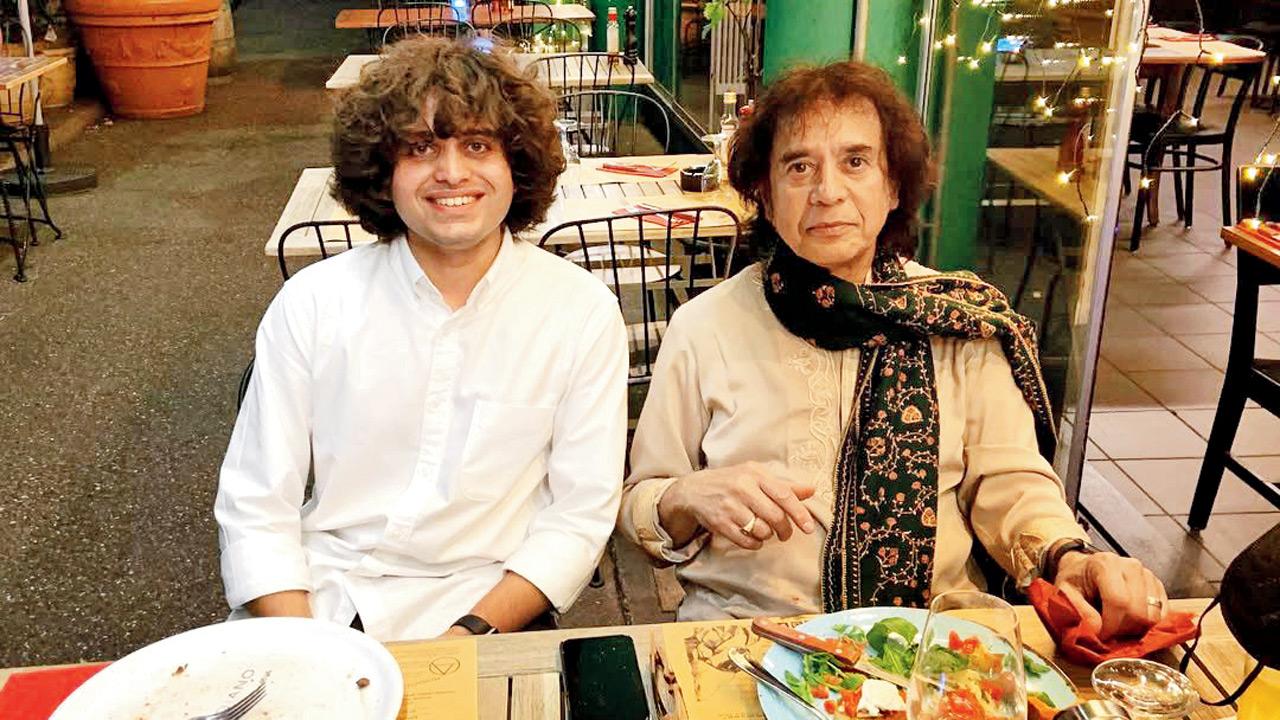A concert of hand-made instruments inside a historic city landmark, taps into a unique practice to evoke a deep connect with nature

A close-up of the innato in the film, Innato-Making of a Harmony-A Meditation by Rishiraj Kulkarni and Hans Houkes. Pic Courtesy/YouTube
There is a difference in the sound rain makes when it hits stone, water or a leaf. In a city where noise is a permanent accompaniment in the background of daily life, these little sounds can hardly be noticed. But Rishiraj Kulkarni has spent close to a decade seeking out such sounds, recording them and finding the right instruments to play them. This weekend, he will bring a compilation of this music to Dr Bhau Daji Lad Museum as part of his India tour, Khoya Main.
The choice of the venue is a conscious one. “I play in only three types of venues — natural spaces, open buildings with a lot of natural light, and heritage structures that are over 100-years-old,” he shares. Kulkarni’s performance will seek to tap into the delicacy of natural sounds through a medley of instrumental and recordings. “The simple sound of rubbing your two fingers together can only be heard if the environment around you is conducive. The venue plays an important role,” he explains.

Rishiraj Kulkarni with the late Ustad Zakir Hussain. Pics Courtesy/Instagram
Tasneem Zakaria Mehta, director and managing trustee, Dr Bhau Daji Lad Museum, adds, “While we’ve hosted musical performances within the Museum in the past, this is our first since reopening and what makes it truly special is his use of handmade instruments. The performance also resonates with our collection, which includes early 20th-century clay figurines depicting musicians and the instruments of that period, as well as instruments such as the tanpura, taus, sitar, and dilruba.”
Kulkarni was educated at the Sahyadri school of J Krishnamurti Foundation in Pune, which explains his philosophical leanings. “It sensitised me to natural and delicate sounds,” the 30-year-old admits. Having picked up the tabla at the age of nine years, Kulkarni would go on to be guided by the late Ustad Zakir Hussain, Pandit Yogesh Shamsi. “I also studied at AR Rahman’s music conservatory in Chennai, before heading to London to study music,” he shares.

Kulkarni performs at a temple near Ahmedabad during his India tour
The blend of philosophy and music drove him to research handmade instruments such as the handpan, the Rav Vast, the tabla and the innato. The common thread between the music, musician, and the instruments is that they have a tactile, natural interface. “I prefer instruments that have an inspiration, and are played by the hand,” he explains.
The innato is an example to this end. “It originates from South and Central America, and is made in The Netherlands. The legend goes that an old lady lived along the sea cliffs. The sound of the howling sea winds inspired her to shape the ceramic to create the flute,” the musician explains.
Living alternately in The Netherlands and India, the composer has been working on this project for the better part of the last decade. The process is not too different from that of a wildlife photographer.

A view of the interiors of the Dr Bhau Daji Lad Museum. File Pic
“The sounds of nature vary from the rustling of the leaves to the cracking of the bonfire, I record these sounds naturally, and without interference. For instance, I do not want to shake a tree to hear the rustle of leaves. That sound is not the same as when a breeze quietly shakes a branch,” he says.
The Mumbai stopover also comes as the penultimate part of a journey that began in January. “We travelled through the country from Pune through Ahmedabad and Udaipur to Delhi, down to Bengaluru and back. Most of the journey was by road, interspersed with free concerts in villages,” Kulkarni shares. With an album already underway, the journey is only beginning.
ON April 12; 6 pm onwards
AT Dr Bhau Daji Lad Museum, Veer Mata Jijabai Bhosle Udyan, Byculla East.
LOG ON TO district.in
COST R499 onwards
 Subscribe today by clicking the link and stay updated with the latest news!" Click here!
Subscribe today by clicking the link and stay updated with the latest news!" Click here!








